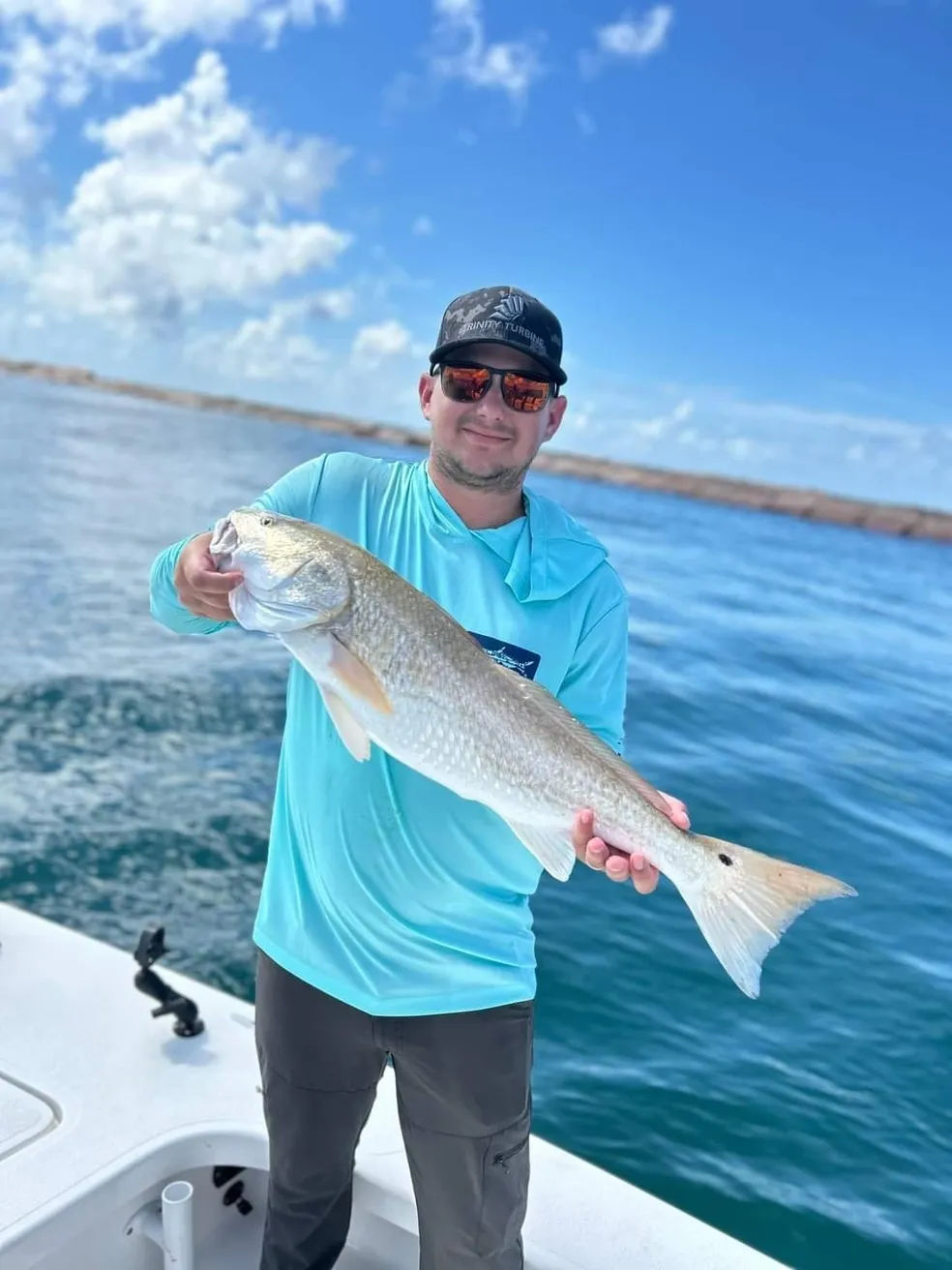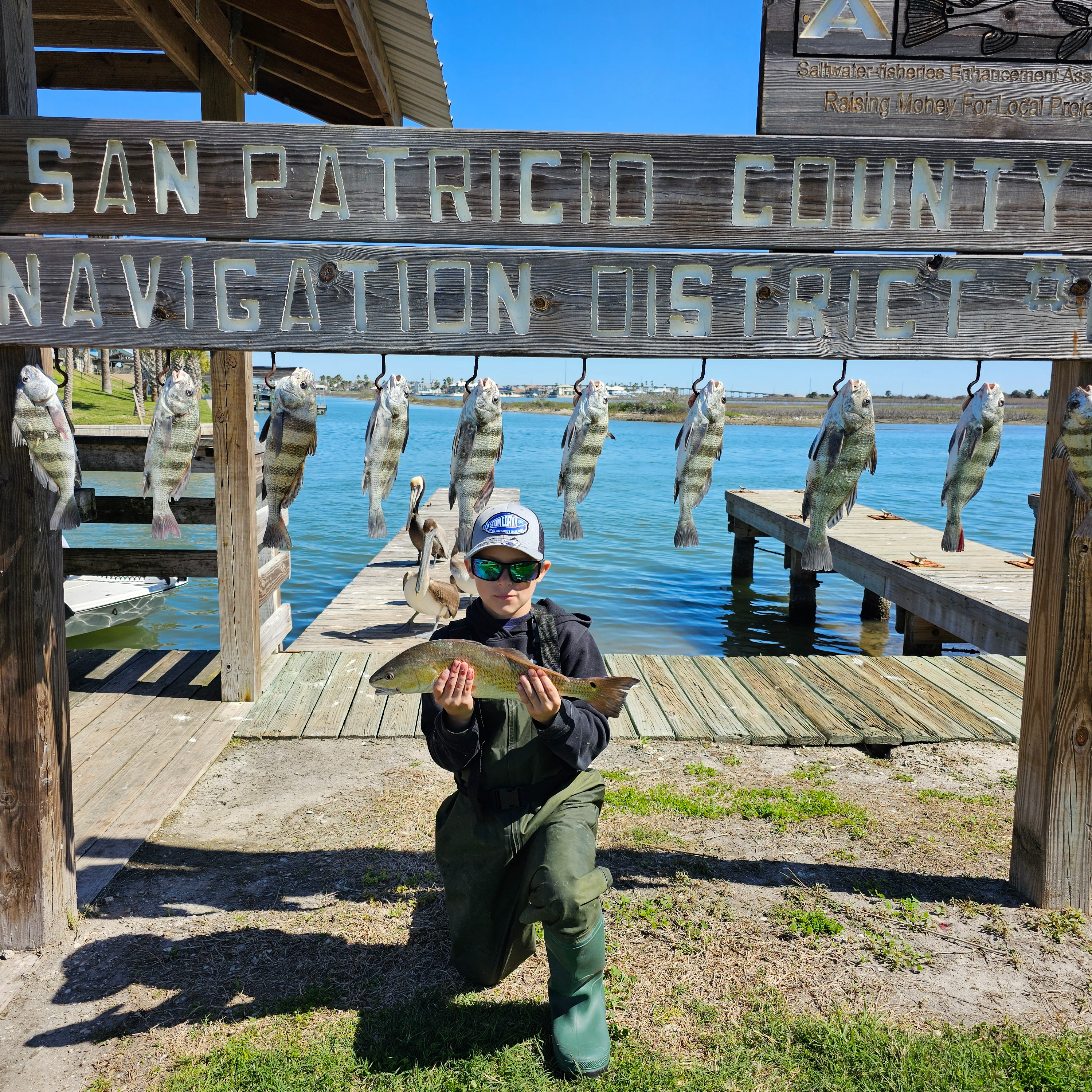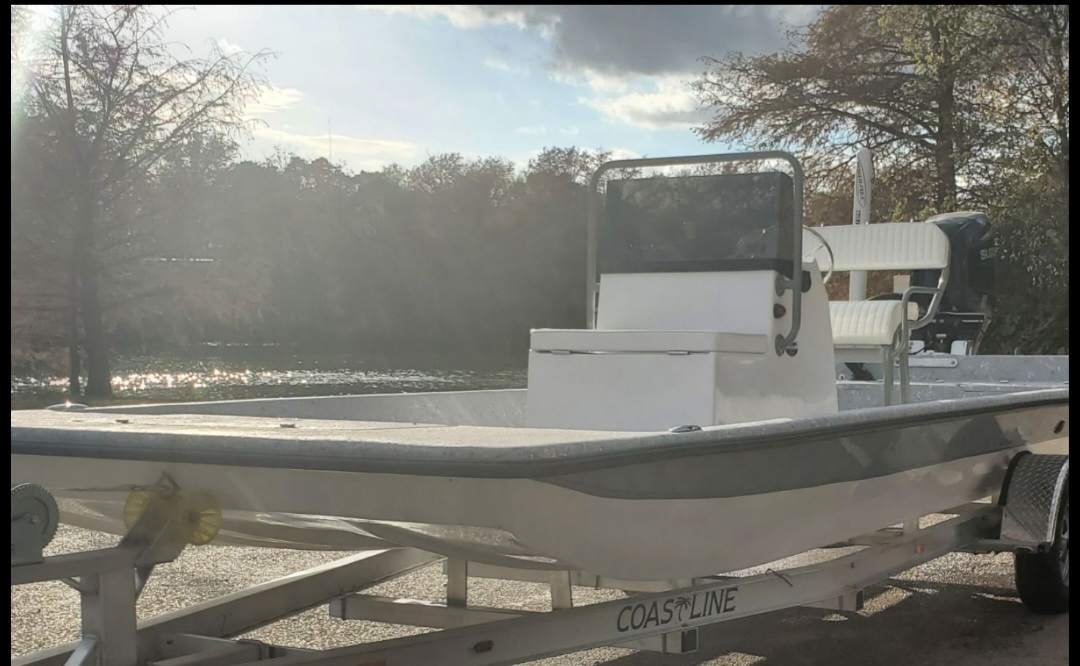Inshore, Jetty in Port Aransas
4 - Hour Rod Bending Jetty Trip
Inshore, Jetty, Flats in Port Aransas
Port Aransas Inshore Slam
Inshore, Flats Fishing in Port Aransas
Bay Adventure- 23' Haynie
Inshore, Flats Fishing in Port Aransas
Full Day Trip Port A Bay
Inshore, Jetty, Flats in Port Aransas
Port Aransas Fishing Trip
Bull Red Jetty Adventure
Inshore, Nearshore, Flats in Port Aransas
Port Aransas Bay Fishing
Inshore, Flats Fishing in Port Aransas
Half Day Trip Port A Bay
Port A Cast-and-Blast
Inshore, Flats Fishing in Port Aransas
Wade Fishing Port A
We started Captain Experiences to make it easy to book fishing and hunting guides around the world. With over 2,000 Damn Good Guides, our platform makes finding and booking a trip seamless. Head here to check out our trips.
Bundle Up, Texans
That's right, you read that correctly. The Lonestar State is in the midst of a good ol' Blue Norther - an abrupt change of temperature brought about by an arctic cold front sweeping across the midwest from the north. Predicting when, where and how long the front will stay is no easy task - models have predicted everything from freezing temperatures in the panhandle to blizzards in Dallas. One thing is for certain, Texas is not used to this kind of cold.

The Euro model is predicting snow, ice and precipitation going into Monday.
So what does that mean for us anglers? It's a safe bet to assume the bite will be slightly off, even if you could stand the cold, wind, and rain. Since ice fishing hasn't quite caught on in Texas yet, you're probably thinking "I'm S-O-L for my fishing trip I had planned for this weekend", and unless you have a magic lure for fishing during a cold front, or you enjoy 35 degree weather with 25 mph winds, you're probably right.
Navigating freezing temps, rain and wind is hard enough, so we condensed everything we know about the arctic cold front in Texas, how it affects the fishing, and the fish themselves.

An unfamiliar sight for residents and anglers of Southeast Texas
How does a cold front affect fishing?
It's been a long-standing fact of life that the fishing during a cold front isn't great. Even if you can get 'em to bite, odds are you'll be ready to head back in shortly after heading out. In terms of the arctic cold front in Texas, we are bordering on uncharted waters. Meteorologists are predicting the coldest weather in decades, enough to keep even the most hardcore anglers off the water.
If you watch the weather often as most anglers do, you probably saw this coming, and most likely got out on the water before the front hit. Fishing before a cold front is a tried and true tactic for hooking up. We won't get into a biology lesson here, but a fish's swim bladder not helps them maintain balance, but it can alert them to incoming pressure changes, like before a cold front. Thus, fishing before a cold front tends to be productive because the fish know something is up, and they want to fill their bellies in anticipation of slower bait activity.

Captain Kenneth in Port O'Connor got his client on a gator before the cold rolled in.
Fishing after a cold front, however, can be a different story. Drastic changes in pressure can throw a fish's behavior off-kilter, and often times they'll head to deeper waters to escape the effects of the front. It's a tall order, but not impossible. In order to fool a lethargic fish during or after a cold front - be it a Redfish in Galveston Bay, or a Largemouth Bass in Lake Travis, you'll have to think differently. Finesse fishing in deeper water around structure is the best strategy, and make sure to keep your line tight to feel those lighter bites.

Captain Ander in Austin catches a bass heading for deeper water ahead of the cold front.
Can I still fish in the cold?
Before you gear up for a blistering cold day on the water, it helps to know how this kind of weather affects the fish themselves, and if there are any local regulations that apply. Multiple inshore saltwater areas along the Gulf Coast have issued possible closures due to the cold front. From Galveston to Port Aransas, fishing inshore waters could be restricted if it gets below freezing. Check out Texas Fishing Regulations to see if your day on the water will be affected.

It's safe to say wade fishing is out of the question this week. Captain Larry made hay before the storm hit.
What happens to the fish in cold weather?
As anglers, it's only right that we express concern for the fish themselves. Apart from seeking shelter in deeper water and going hungry for a couple days, extreme cold front can affect fish in more severe ways.
Fish in shallow water are susceptible to "cold stunning", a phenomenon often used in the context of sea turtles. Cold blooded, water-borne species rely on the surrounding water temperature to regulate their internal temperature. If the water gets cold enough, it can "stun" them, leading to increased predation by other species, or literally freezing to death.
Authorities issue closures of inshore waters during extreme cold fronts to protect the fish when they're most vulnerable. According to some guides in the area, anglers will head out to affected areas and scoop up cold-stunned fish. This may seem like a great way to fill up the freezer with fresh fish fillets, but it's an unsustainable practice that decreases the viability of the fisheries.

Captain George got his client on some Reds before the cold hit.
In some instances, cold-stun events can kill enough fish that the state will issue a ban on fishing effected species. This gives them enough time to recover from the mass die-off to ensure that the fishery stays healthy for years to come.
It's hard to imagine the water in Texas getting so cold that it kills off our beloved Specks and Reds, but with everything that's been going on recently, nothing is out of the question. The best bet is to catch them before the water gets cold, then they don't have to worry about freezing to death!
Joey Butrus
Updated on June 18, 2023

November 15, 2023

March 8, 2022

June 3, 2021

July 31, 2024

October 26, 2020
Related Articles
January 19, 2023
September 13, 2019
December 6, 2021
Featured Locations
- Fishing Charters Near Me
- Austin Fishing Guides
- Biloxi Fishing Charters
- Bradenton Fishing Charters
- Cabo San Lucas Fishing Charters
- Cancun Fishing Charters
- Cape Coral Fishing Charters
- Charleston Fishing Charters
- Clearwater Fishing Charters
- Corpus Christi Fishing Charters
- Crystal River Fishing Charters
- Dauphin Island Fishing Charters
- Daytona Beach Fishing Charters
- Destin Fishing Charters
- Fort Lauderdale Fishing Charters
- Fort Myers Fishing Charters
- Fort Walton Beach Fishing Charters
- Galveston Fishing Charters
- Gulf Shores Fishing Charters
- Hatteras Fishing Charters
- Hilton Head Fishing Charters
- Islamorada Fishing Charters
- Jacksonville Fishing Charters
- Jupiter Fishing Charters
- Key Largo Fishing Charters
- Key West Fishing Charters
- Kona Fishing Charters
- Lakeside Marblehead Fishing Charters
- Marathon Fishing Charters
- Marco Island Fishing Charters
- Miami Fishing Charters
- Montauk Fishing Charters
- Morehead City Fishing Charters
- Naples Fishing Charters
- New Orleans Fishing Charters
- New Smyrna Beach Fishing Charters
- Ocean City Fishing Charters
- Orange Beach Fishing Charters
- Panama City Beach Fishing Charters
- Pensacola Fishing Charters
- Pompano Beach Fishing Charters
- Port Aransas Fishing Charters
- Port Orange Fishing Charters
- Rockport Fishing Charters
- San Diego Fishing Charters
- San Juan Fishing Charters
- Sarasota Fishing Charters
- South Padre Island Fishing Charters
- St. Augustine Fishing Charters
- St. Petersburg Fishing Charters
- Tampa Fishing Charters
- Tarpon Springs Fishing Charters
- Venice Fishing Charters
- Virginia Beach Fishing Charters
- West Palm Beach Fishing Charters
- Wilmington Fishing Charters
- Wrightsville Beach Fishing Charters































